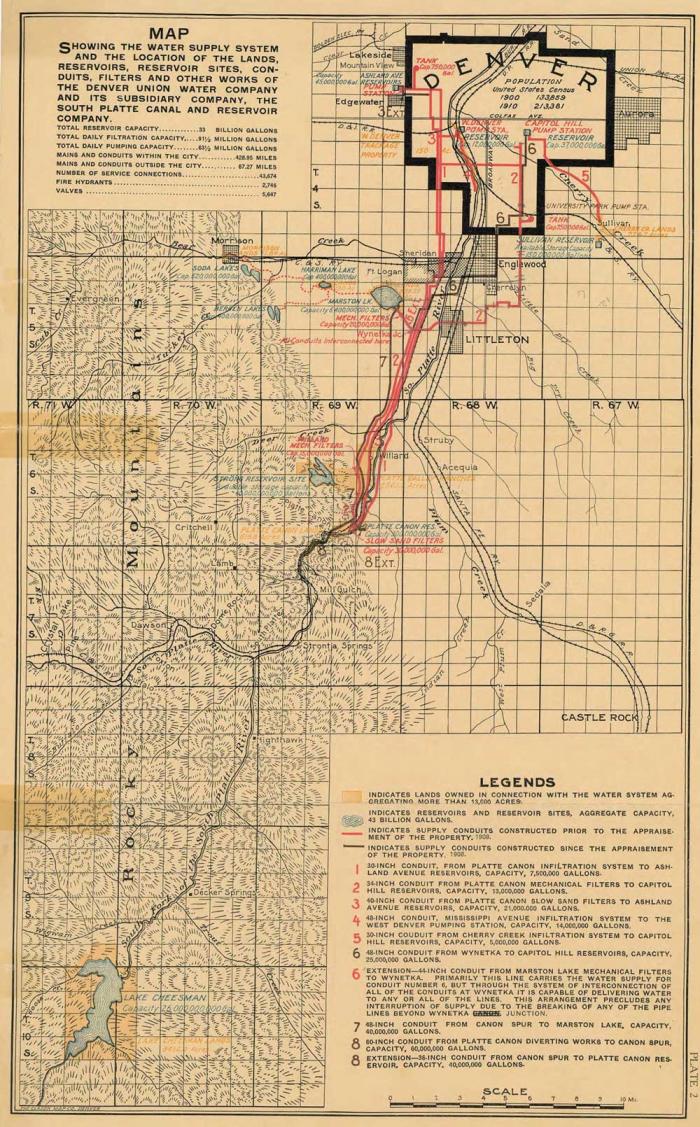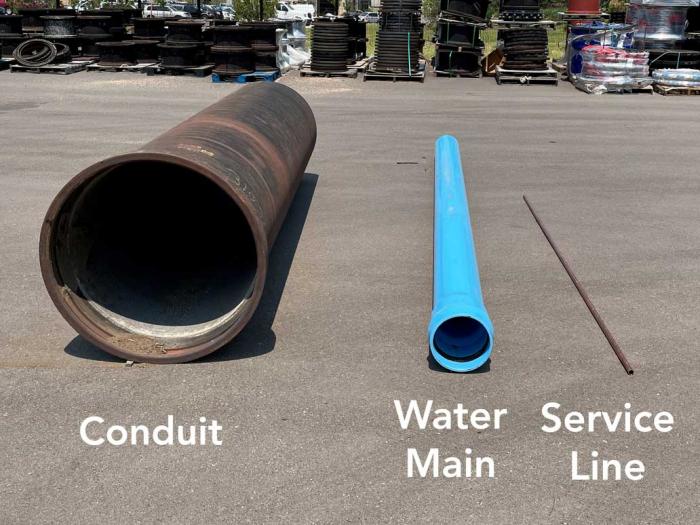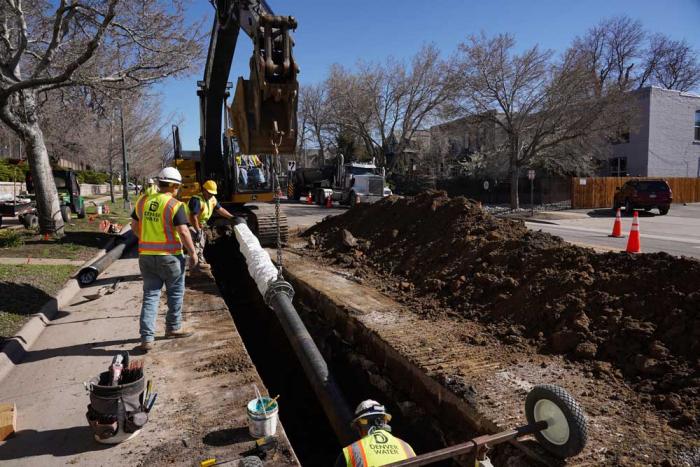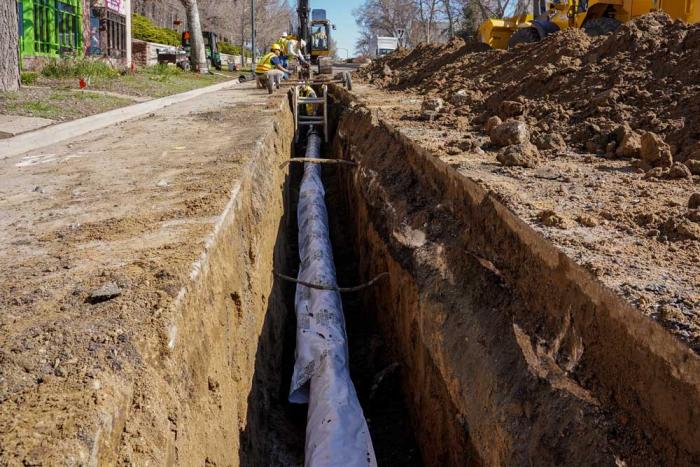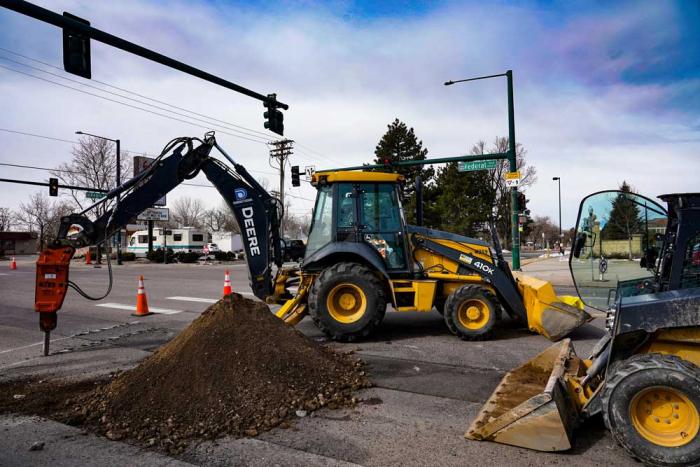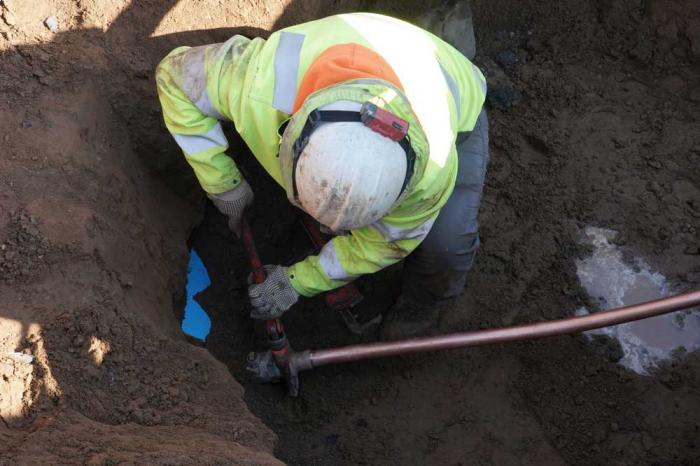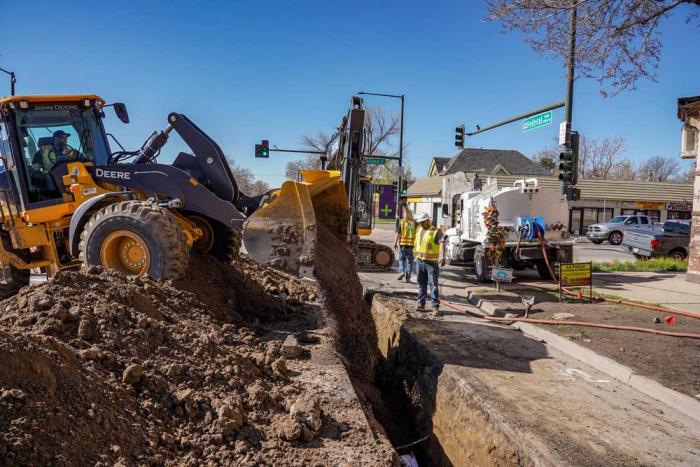Times change, so do our pipes
In the 1890s, when Denver was still a dusty town on the eastern plains of Colorado, the city’s early utility workers installed a large cast-iron pipeline, named Conduit No. 1, under the ground of what would become one of the city’s busiest streets — Federal Boulevard.
The pipeline was 30 inches in diameter and carried water from a treatment site in Waterton Canyon, southwest of today’s metro area where the South Platte River spills out of the mountains and foothills onto the plains, north to people in the growing city.
Fast-forward 130 years and Denver Water is still using that pipeline and at the same time modernizing how customers get water from the pipe.
In Denver’s early years, water customers tapped directly into the big conduit and ran smaller pipes called “service lines” to get water to their homes and businesses.
Conduits are what Denver Water calls pipes that are more than 24 inches in diameter.
While the practice of tapping off large pipes worked when Denver was a small city, it’s no longer practical.
“We’ve been taking customers off the conduits for decades,” said Katie Ross, distribution engineering manager at Denver Water. “It was a practice done in the past, but there are better ways to deliver water today.”
Denver Water’s water pipeline delivery system is similar to the process of moving electrical power across the city.
High-voltage transmission lines are used to move large amounts of electricity over many miles, while smaller “primary” lines carry electricity into neighborhoods, and even smaller “secondary” lines bring power to homes and businesses.
Denver Water uses its conduits to carry large amounts of water over long distances, then smaller water mains branch off into neighborhoods and even smaller service line pipes take water from the main to the property.
In 2021, Denver Water embarked on a project to move 180 customers off the 30-inch diameter Conduit No. 1 under Federal Boulevard by installing smaller, 6- and 8-inch water mains parallel to the larger pipe.
The northwest Denver project took place between West 16th and West 29th avenues near Empower Field at Mile High.
“The big conduits are made for moving large amounts of water from one part of the city to another, distribution mains are best to get water into the home,” Ross said.
Ross adds that if there are problems with a customer’s water service and they are connected to a large conduit, it can be difficult to make repairs. Conduits are bigger and typically buried deeper underground, which also makes it more expensive to repair or replace.
Another concern is if there’s a leak, break or a need for maintenance on the big conduits, the entire pipeline must be shut down, which can disrupt water service for a large number of customers.
“Water mains are a more appropriate size of pipe to deliver water to neighborhoods and a better fit to connect the service lines to the individual customer,” Ross said.
“If there’s ever a problem, it’s easier for us to limit outages, reroute water and schedule maintenance when customers are connected to water mains than high-capacity conduits.”
The work is scheduled to be completed by end of summer 2021.
Dealing with growth
In spring 2021, new water mains also were installed on another section of Federal Boulevard, between West 46th and West 52nd avenues. The large Conduit No. 1 is not under this section of Federal.
In this section, Denver Water replaced 6-inch sections of water mains installed between 1912 and 1950 with larger, 8-inch and 12-inch pipes.
The bigger pipes were installed to upgrade the water system through Denver Water’s underground maze of pipes.
“In the 1920s, they didn’t know what the development patterns of the future were going to be, so now we’re going in and ‘right-sizing’ the pipes to fit the number of customers and our hydraulic grid for the area,” Ross said.
Denver Water adheres to a set of engineering standards to determine how large pipes should be to deliver water to customers.
“The larger pipes will help us ensure a reliable supply of water to the people in northwest Denver,” Ross said. “We’re looking to upsize pipes in other growing parts of our service area as well.”
Replacing lead service lines
For both projects along Federal Boulevard, while crews were installing new water mains they also replaced lead service lines discovered along the way as part of Denver Water’s Lead Reduction Program.
Service lines are the small pipes that carry water from a water main to a home or business and are owned by the customer.
Lead was a commonly used material nationwide for service lines through the mid-1950s. Because of the risks of lead particles from these customer-owned service lines getting into the customers’ water, Denver Water is removing and replacing all lead service lines that it encounters during construction projects.
The Federal Boulevard project is part of Denver Water’s proactive strategy to inspect, upgrade and replace sections of water pipeline.
The utility has over 3,000 miles of pipe in its service area to maintain, which often requires construction and impacts to traffic.
“We never want to be an inconvenience to the community, but losing water is also an inconvenience, so by proactively working on our pipes, we can minimize service disruptions in the future,” Ross said.
“Our goal is to make sure customers never go without water and we hope that’s what these projects will ensure.”


